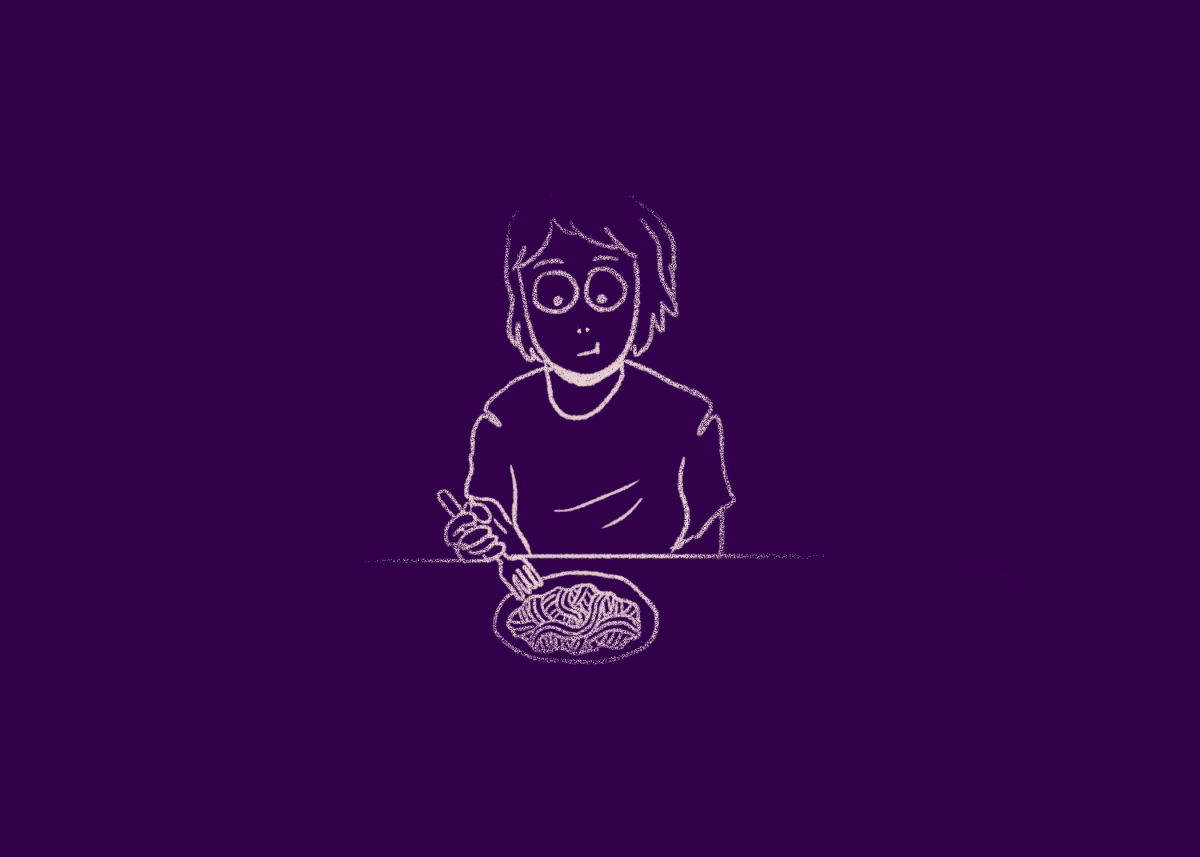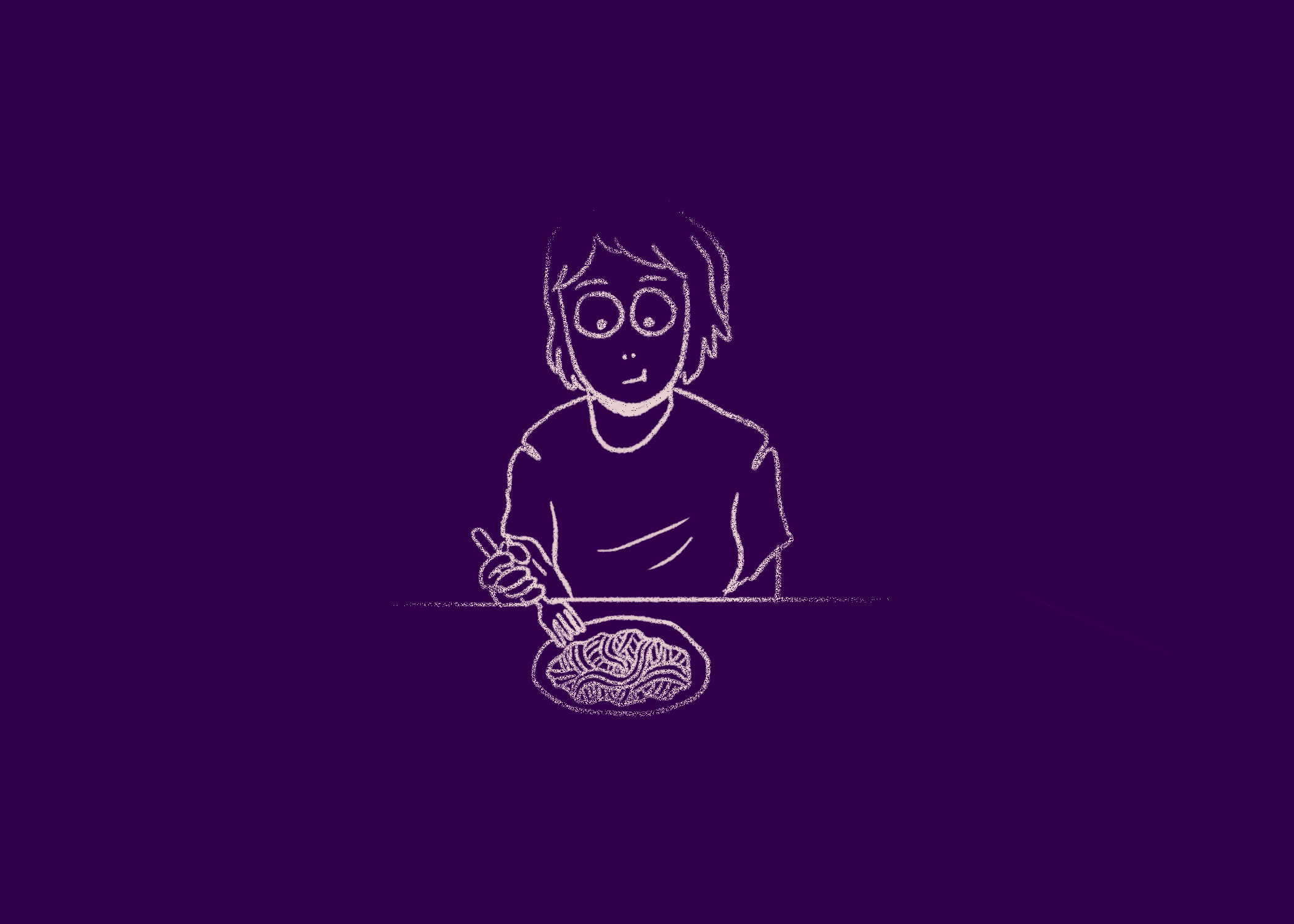After students picked up their plates of pasta and found their seats in the Student Activity Center’s ballroom, the lights were shut off. Students were left to navigate their plates without their sense of sight, as people with visual impairments must do all the time.
Story by Brittany Wagner
Illustration by Sonia Margolin
Dinner in the Dark was hosted on Oct. 26 by the Disability Advocacy Student Coalition (DASC) and featured a panel of University of Texas at Austin students who all live with visual impairments.
DASC President Kate Strickland says attendance was the same as last semester’s Dinner in the Dark, though this semester’s location allowed people to spread out more and made it easier to hear the question and answer portion of the event. Though the panelists touched on many topics relating to their disability, the main message of the event was that there is no universal experience of visual impairment.
“People with visual disabilities are all really drastically different,” DASC Vice President and corporate communications senior Stephanie Tomasky says. “There’s no one way to approach them, no one personality [they have], no one technology that they use. They’re as different as anybody else.”
The panelists spoke about how they navigate campus, how they might have altered their future plans because of their impairment and how UT could fix their elevators to be more disability-friendly by announcing the floor number. “The thing about the elevators beeping, I’m not kidding about that, like this is a serious thing,” Kassy Cardenas, women and gender studies junior and panelist, says.
“Yeah, UT, if you’re listening, please make the elevators safer,” panelist Preetham Sunkavalli, an MBA second year transfer student from India, says.
The event was eye-opening for computer science sophomore Sophia Nguyen, who doesn’t have a lot of experience interacting with visually impaired students. “I’d never thought [about how] visually impaired people would have to eat like this all the time,” Nguyen says. She was interested in the assistive technology they use that did not exist 20 years ago and found it useful to hear how students prefer to be approached if they’re using a guide dog or cane.
Cardenas says that though she and her fellow panelists were open to discussing their disabilities, not everyone will feel the same. “It’s important to acknowledge that we might say, ‘This person is not fragile and they’d love for you to talk about these things,’ but there are other people who might say, ‘I don’t appreciate you talking about these things with me.’ There’s not one person with a disability, there are many,” Cardenas says.
Sunkavalli participated in the event because he wanted to dispel misconceptions about the visually impaired. “One of the main misconceptions is that the person is fragile, that there are many things he cannot do,” Sunkavalli says. He also made it clear that people should not be identified by their disability. “Look at me as the cardboard artist who studies very well, who’s incredibly smart, who is by the way, oh! He’s visually impaired. Don’t define my identity [by my disability], but do consider it an attribute.”
“There needs to be more of a push like ‘I can’t relate, but I understand what you’re saying.’ As opposed to ‘Oh, I get you’ when you don’t get me,” Cardenas says. “I would just say, see the human. I think if we live our lives that way, society would just transform.”












































